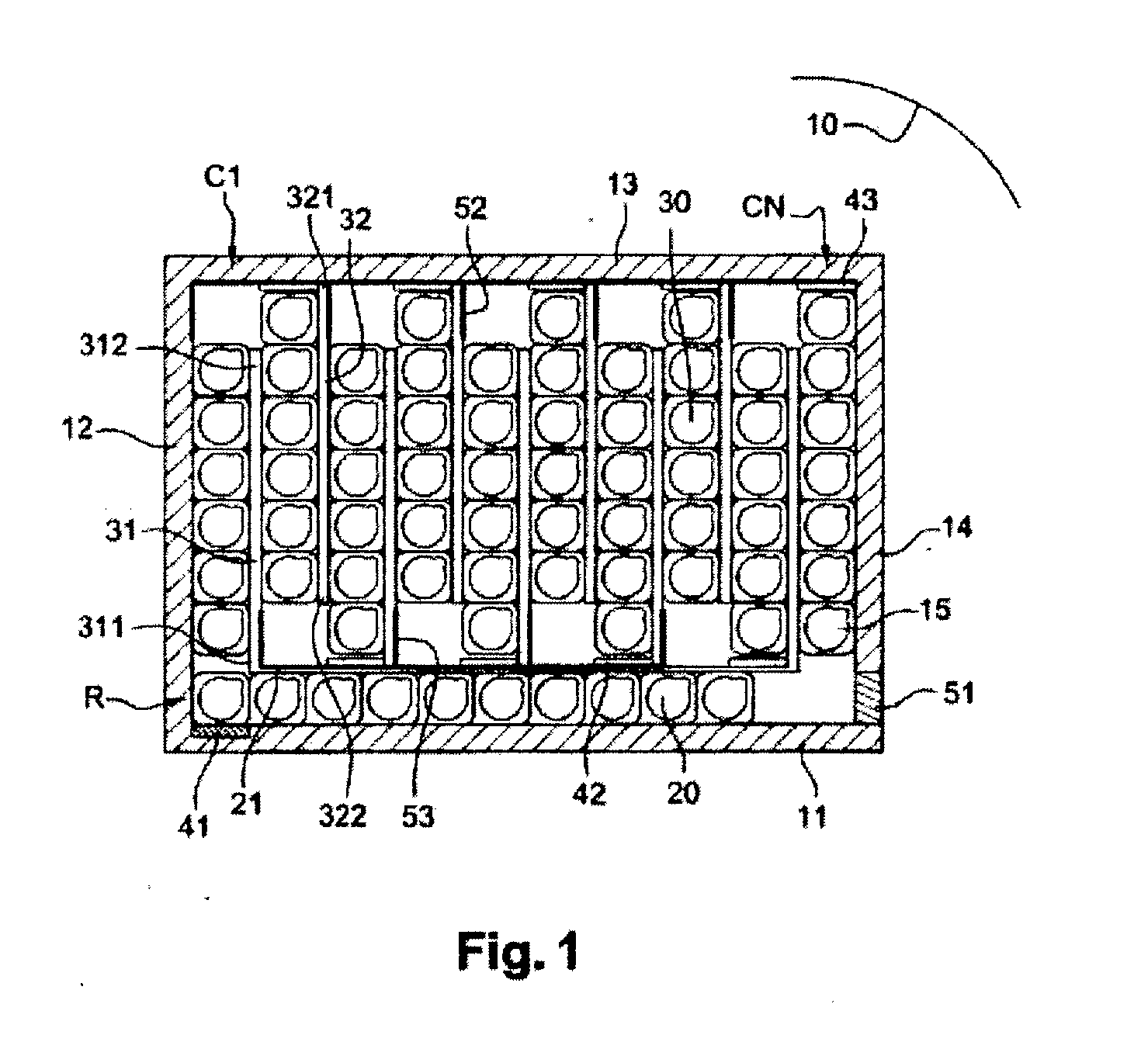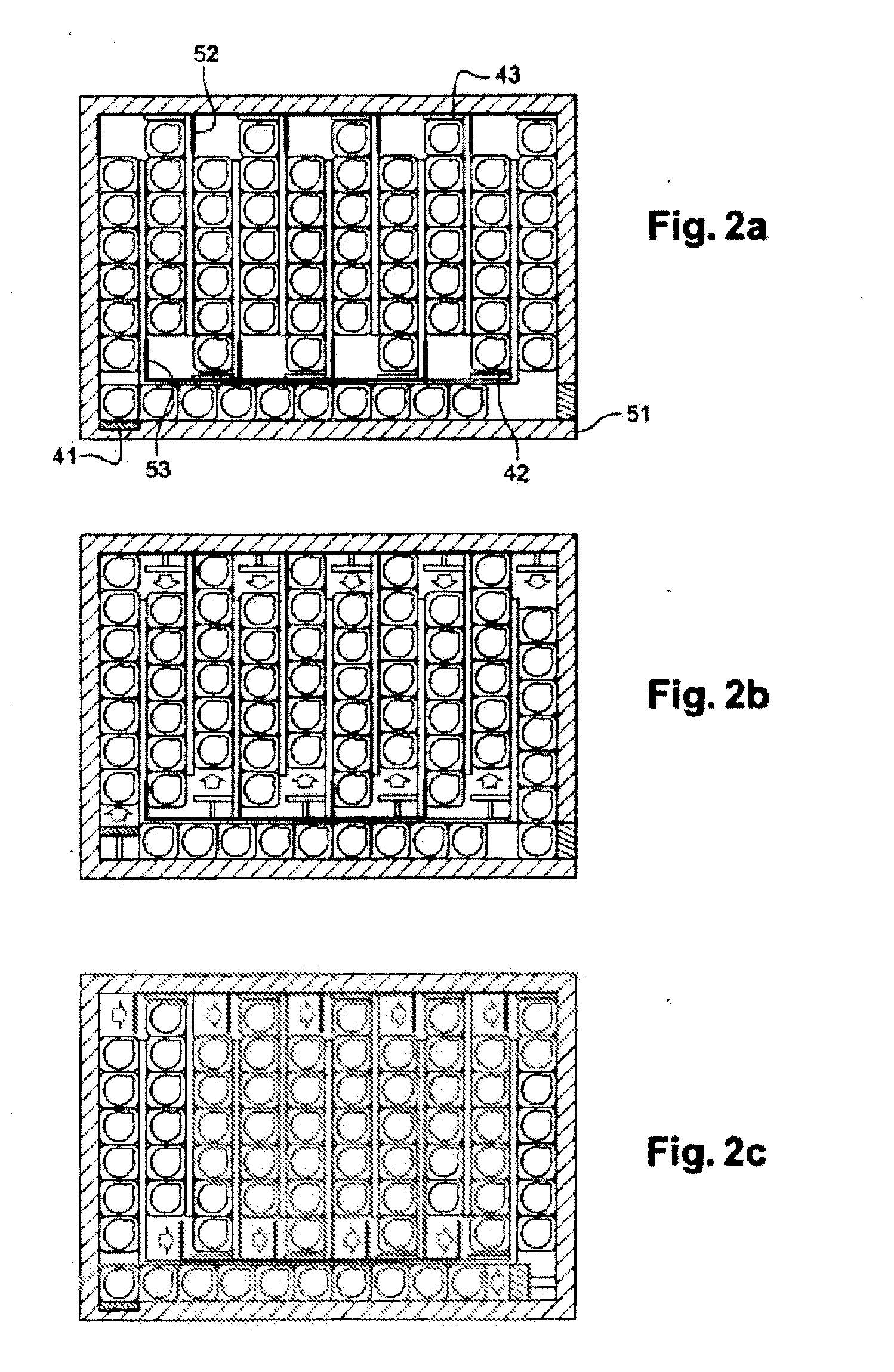Automaton for Plant Phenotyping
a plant phenotype and automatic technology, applied in the field of automatic plants, can solve the problems of inability to know how much, in their respective phenotypes, and inability to cultivate plants in a homogeneous environment, and achieve the effect of reducing the variation of environmental conditions
- Summary
- Abstract
- Description
- Claims
- Application Information
AI Technical Summary
Benefits of technology
Problems solved by technology
Method used
Image
Examples
example 1
Displacing Movable Holders in One Embodiment of the Method
[0225]This example is illustrated by the three top-view diagrams in FIG. 2.
[0226]FIG. 2a) reprises the specific embodiment of the automat presented in FIG. 1. In this embodiment, N is equal to 10, A is equal to 11, and B is equal to 7. Therefore, these parameters limit the automaton's displacement capacity to, at most, 71 movable holders (15), which are present on the plate (10) of the automaton. This configuration of the plate (10) corresponds to one of the required initial positions, since any subsequent translation is possible, whether vertical or horizontal, since no motion of the translation means can be interfered with.
[0227]FIGS. 2b) and 2c) correspond to the step for displacing the movable holders (15) by one step, which consists in performing a sequence of ones b) and one step c).
[0228]Step b) is a step for vertical translation of a subset of the movable holders (15) along the axis of columns C1 through CN. In the ca...
example 3
Results Obtained by the Method of the Invention
[0252]This example is illustrated by the two graphs in FIG. 4 (FIGS. 4A and 4B), both of which illustrate the cumulative weight loss (in grams) on days J1 through J4 for each clod out of 735, which undergo either one or six 4-hour displacement cycles per day.
[0253]Example 3 is also illustrated by the two graphs in FIG. 5, which present the weight loss curves after 24 hours (in grams per clod) for a set of 735 clods that undergo either one (fixed pots) or six (rotating pots) 4-hour displacement cycles per day.
[0254]The experiment is performed in a controlled environment, inside a plant cultivation enclosure.
[0255]In this example, the method followed is similar to the method described above in Example 2, except that the watering step does not occur in step 30.
[0256]The embodiment of the method wherein six full displacement cycles of the movable holders are performed per day is one of the optimal embodiments of the invention, during which ...
PUM
 Login to View More
Login to View More Abstract
Description
Claims
Application Information
 Login to View More
Login to View More - R&D
- Intellectual Property
- Life Sciences
- Materials
- Tech Scout
- Unparalleled Data Quality
- Higher Quality Content
- 60% Fewer Hallucinations
Browse by: Latest US Patents, China's latest patents, Technical Efficacy Thesaurus, Application Domain, Technology Topic, Popular Technical Reports.
© 2025 PatSnap. All rights reserved.Legal|Privacy policy|Modern Slavery Act Transparency Statement|Sitemap|About US| Contact US: help@patsnap.com



